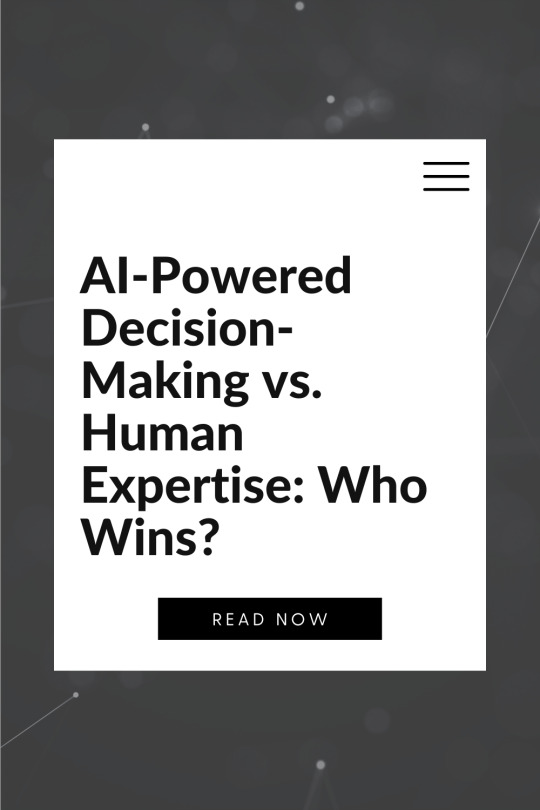#no code data platforms
Explore tagged Tumblr posts
Text
Moments Lab Secures $24 Million to Redefine Video Discovery With Agentic AI
New Post has been published on https://thedigitalinsider.com/moments-lab-secures-24-million-to-redefine-video-discovery-with-agentic-ai/
Moments Lab Secures $24 Million to Redefine Video Discovery With Agentic AI


Moments Lab, the AI company redefining how organizations work with video, has raised $24 million in new funding, led by Oxx with participation from Orange Ventures, Kadmos, Supernova Invest, and Elaia Partners. The investment will supercharge the company’s U.S. expansion and support continued development of its agentic AI platform — a system designed to turn massive video archives into instantly searchable and monetizable assets.
The heart of Moments Lab is MXT-2, a multimodal video-understanding AI that watches, hears, and interprets video with context-aware precision. It doesn’t just label content — it narrates it, identifying people, places, logos, and even cinematographic elements like shot types and pacing. This natural-language metadata turns hours of footage into structured, searchable intelligence, usable across creative, editorial, marketing, and monetization workflows.
But the true leap forward is the introduction of agentic AI — an autonomous system that can plan, reason, and adapt to a user’s intent. Instead of simply executing instructions, it understands prompts like “generate a highlight reel for social” and takes action: pulling scenes, suggesting titles, selecting formats, and aligning outputs with a brand’s voice or platform requirements.
“With MXT, we already index video faster than any human ever could,” said Philippe Petitpont, CEO and co-founder of Moments Lab. “But with agentic AI, we’re building the next layer — AI that acts as a teammate, doing everything from crafting rough cuts to uncovering storylines hidden deep in the archive.”
From Search to Storytelling: A Platform Built for Speed and Scale
Moments Lab is more than an indexing engine. It’s a full-stack platform that empowers media professionals to move at the speed of story. That starts with search — arguably the most painful part of working with video today.
Most production teams still rely on filenames, folders, and tribal knowledge to locate content. Moments Lab changes that with plain text search that behaves like Google for your video library. Users can simply type what they’re looking for — “CEO talking about sustainability” or “crowd cheering at sunset” — and retrieve exact clips within seconds.
Key features include:
AI video intelligence: MXT-2 doesn’t just tag content — it describes it using time-coded natural language, capturing what’s seen, heard, and implied.
Search anyone can use: Designed for accessibility, the platform allows non-technical users to search across thousands of hours of footage using everyday language.
Instant clipping and export: Once a moment is found, it can be clipped, trimmed, and exported or shared in seconds — no need for timecode handoffs or third-party tools.
Metadata-rich discovery: Filter by people, events, dates, locations, rights status, or any custom facet your workflow requires.
Quote and soundbite detection: Automatically transcribes audio and highlights the most impactful segments — perfect for interview footage and press conferences.
Content classification: Train the system to sort footage by theme, tone, or use case — from trailers to corporate reels to social clips.
Translation and multilingual support: Transcribes and translates speech, even in multilingual settings, making content globally usable.
This end-to-end functionality has made Moments Lab an indispensable partner for TV networks, sports rights holders, ad agencies, and global brands. Recent clients include Thomson Reuters, Amazon Ads, Sinclair, Hearst, and Banijay — all grappling with increasingly complex content libraries and growing demands for speed, personalization, and monetization.
Built for Integration, Trained for Precision
MXT-2 is trained on 1.5 billion+ data points, reducing hallucinations and delivering high confidence outputs that teams can rely on. Unlike proprietary AI stacks that lock metadata in unreadable formats, Moments Lab keeps everything in open text, ensuring full compatibility with downstream tools like Adobe Premiere, Final Cut Pro, Brightcove, YouTube, and enterprise MAM/CMS platforms via API or no-code integrations.
“The real power of our system is not just speed, but adaptability,” said Fred Petitpont, co-founder and CTO. “Whether you’re a broadcaster clipping sports highlights or a brand licensing footage to partners, our AI works the way your team already does — just 100x faster.”
The platform is already being used to power everything from archive migration to live event clipping, editorial research, and content licensing. Users can share secure links with collaborators, sell footage to external buyers, and even train the system to align with niche editorial styles or compliance guidelines.
From Startup to Standard-Setter
Founded in 2016 by twin brothers Frederic Petitpont and Phil Petitpont, Moments Lab began with a simple question: What if you could Google your video library? Today, it’s answering that — and more — with a platform that redefines how creative and editorial teams work with media. It has become the most awarded indexing AI in the video industry since 2023 and shows no signs of slowing down.
“When we first saw MXT in action, it felt like magic,” said Gökçe Ceylan, Principal at Oxx. “This is exactly the kind of product and team we look for — technically brilliant, customer-obsessed, and solving a real, growing need.”
With this new round of funding, Moments Lab is poised to lead a category that didn’t exist five years ago — agentic AI for video — and define the future of content discovery.
#2023#Accessibility#adobe#Agentic AI#ai#ai platform#AI video#Amazon#API#assets#audio#autonomous#billion#brands#Building#CEO#CMS#code#compliance#content#CTO#data#dates#detection#development#discovery#editorial#engine#enterprise#event
2 notes
·
View notes
Text
Your Guide to B.Tech in Computer Science & Engineering Colleges

In today's technology-driven world, pursuing a B.Tech in Computer Science and Engineering (CSE) has become a popular choice among students aspiring for a bright future. The demand for skilled professionals in areas like Artificial Intelligence, Machine Learning, Data Science, and Cloud Computing has made computer science engineering colleges crucial in shaping tomorrow's innovators. Saraswati College of Engineering (SCOE), a leader in engineering education, provides students with a perfect platform to build a successful career in this evolving field.
Whether you're passionate about coding, software development, or the latest advancements in AI, pursuing a B.Tech in Computer Science and Engineering at SCOE can open doors to endless opportunities.
Why Choose B.Tech in Computer Science and Engineering?
Choosing a B.Tech in Computer Science and Engineering isn't just about learning to code; it's about mastering problem-solving, logical thinking, and the ability to work with cutting-edge technologies. The course offers a robust foundation that combines theoretical knowledge with practical skills, enabling students to excel in the tech industry.
At SCOE, the computer science engineering courses are designed to meet industry standards and keep up with the rapidly evolving tech landscape. With its AICTE Approved, NAAC Accredited With Grade-"A+" credentials, the college provides quality education in a nurturing environment. SCOE's curriculum goes beyond textbooks, focusing on hands-on learning through projects, labs, workshops, and internships. This approach ensures that students graduate not only with a degree but with the skills needed to thrive in their careers.
The Role of Computer Science Engineering Colleges in Career Development
The role of computer science engineering colleges like SCOE is not limited to classroom teaching. These institutions play a crucial role in shaping students' futures by providing the necessary infrastructure, faculty expertise, and placement opportunities. SCOE, established in 2004, is recognized as one of the top engineering colleges in Navi Mumbai. It boasts a strong placement record, with companies like Goldman Sachs, Cisco, and Microsoft offering lucrative job opportunities to its graduates.
The computer science engineering courses at SCOE are structured to provide a blend of technical and soft skills. From the basics of computer programming to advanced topics like Artificial Intelligence and Data Science, students at SCOE are trained to be industry-ready. The faculty at SCOE comprises experienced professionals who not only impart theoretical knowledge but also mentor students for real-world challenges.
Highlights of the B.Tech in Computer Science and Engineering Program at SCOE
Comprehensive Curriculum: The B.Tech in Computer Science and Engineering program at SCOE covers all major areas, including programming languages, algorithms, data structures, computer networks, operating systems, AI, and Machine Learning. This ensures that students receive a well-rounded education, preparing them for various roles in the tech industry.
Industry-Relevant Learning: SCOE’s focus is on creating professionals who can immediately contribute to the tech industry. The college regularly collaborates with industry leaders to update its curriculum, ensuring students learn the latest technologies and trends in computer science engineering.
State-of-the-Art Infrastructure: SCOE is equipped with modern laboratories, computer centers, and research facilities, providing students with the tools they need to gain practical experience. The institution’s infrastructure fosters innovation, helping students work on cutting-edge projects and ideas during their B.Tech in Computer Science and Engineering.
Practical Exposure: One of the key benefits of studying at SCOE is the emphasis on practical learning. Students participate in hands-on projects, internships, and industry visits, giving them real-world exposure to how technology is applied in various sectors.
Placement Support: SCOE has a dedicated placement cell that works tirelessly to ensure students secure internships and job offers from top companies. The B.Tech in Computer Science and Engineering program boasts a strong placement record, with top tech companies visiting the campus every year. The highest on-campus placement offer for the academic year 2022-23 was an impressive 22 LPA from Goldman Sachs, reflecting the college’s commitment to student success.
Personal Growth: Beyond academics, SCOE encourages students to participate in extracurricular activities, coding competitions, and tech fests. These activities enhance their learning experience, promote teamwork, and help students build a well-rounded personality that is essential in today’s competitive job market.
What Makes SCOE Stand Out?
With so many computer science engineering colleges to choose from, why should you consider SCOE for your B.Tech in Computer Science and Engineering? Here are a few factors that make SCOE a top choice for students:
Experienced Faculty: SCOE prides itself on having a team of highly qualified and experienced faculty members. The faculty’s approach to teaching is both theoretical and practical, ensuring students are equipped to tackle real-world challenges.
Strong Industry Connections: The college maintains strong relationships with leading tech companies, ensuring that students have access to internship opportunities and campus recruitment drives. This gives SCOE graduates a competitive edge in the job market.
Holistic Development: SCOE believes in the holistic development of students. In addition to academic learning, the college offers opportunities for personal growth through various student clubs, sports activities, and cultural events.
Supportive Learning Environment: SCOE provides a nurturing environment where students can focus on their academic and personal growth. The campus is equipped with modern facilities, including spacious classrooms, labs, a library, and a recreation center.
Career Opportunities After B.Tech in Computer Science and Engineering from SCOE
Graduates with a B.Tech in Computer Science and Engineering from SCOE are well-prepared to take on various roles in the tech industry. Some of the most common career paths for CSE graduates include:
Software Engineer: Developing software applications, web development, and mobile app development are some of the key responsibilities of software engineers. This role requires strong programming skills and a deep understanding of software design.
Data Scientist: With the rise of big data, data scientists are in high demand. CSE graduates with knowledge of data science can work on data analysis, machine learning models, and predictive analytics.
AI Engineer: Artificial Intelligence is revolutionizing various industries, and AI engineers are at the forefront of this change. SCOE’s curriculum includes AI and Machine Learning, preparing students for roles in this cutting-edge field.
System Administrator: Maintaining and managing computer systems and networks is a crucial role in any organization. CSE graduates can work as system administrators, ensuring the smooth functioning of IT infrastructure.
Cybersecurity Specialist: With the growing threat of cyberattacks, cybersecurity specialists are essential in protecting an organization’s digital assets. CSE graduates can pursue careers in cybersecurity, safeguarding sensitive information from hackers.
Conclusion: Why B.Tech in Computer Science and Engineering at SCOE is the Right Choice
Choosing the right college is crucial for a successful career in B.Tech in Computer Science and Engineering. Saraswati College of Engineering (SCOE) stands out as one of the best computer science engineering colleges in Navi Mumbai. With its industry-aligned curriculum, state-of-the-art infrastructure, and excellent placement record, SCOE offers students the perfect environment to build a successful career in computer science.
Whether you're interested in AI, data science, software development, or any other field in computer science, SCOE provides the knowledge, skills, and opportunities you need to succeed. With a strong focus on hands-on learning and personal growth, SCOE ensures that students graduate not only as engineers but as professionals ready to take on the challenges of the tech world.
If you're ready to embark on an exciting journey in the world of technology, consider pursuing your B.Tech in Computer Science and Engineering at SCOE—a college where your future takes shape.
#In today's technology-driven world#pursuing a B.Tech in Computer Science and Engineering (CSE) has become a popular choice among students aspiring for a bright future. The de#Machine Learning#Data Science#and Cloud Computing has made computer science engineering colleges crucial in shaping tomorrow's innovators. Saraswati College of Engineeri#a leader in engineering education#provides students with a perfect platform to build a successful career in this evolving field.#Whether you're passionate about coding#software development#or the latest advancements in AI#pursuing a B.Tech in Computer Science and Engineering at SCOE can open doors to endless opportunities.#Why Choose B.Tech in Computer Science and Engineering?#Choosing a B.Tech in Computer Science and Engineering isn't just about learning to code; it's about mastering problem-solving#logical thinking#and the ability to work with cutting-edge technologies. The course offers a robust foundation that combines theoretical knowledge with prac#enabling students to excel in the tech industry.#At SCOE#the computer science engineering courses are designed to meet industry standards and keep up with the rapidly evolving tech landscape. With#NAAC Accredited With Grade-“A+” credentials#the college provides quality education in a nurturing environment. SCOE's curriculum goes beyond textbooks#focusing on hands-on learning through projects#labs#workshops#and internships. This approach ensures that students graduate not only with a degree but with the skills needed to thrive in their careers.#The Role of Computer Science Engineering Colleges in Career Development#The role of computer science engineering colleges like SCOE is not limited to classroom teaching. These institutions play a crucial role in#faculty expertise#and placement opportunities. SCOE#established in 2004#is recognized as one of the top engineering colleges in Navi Mumbai. It boasts a strong placement record
2 notes
·
View notes
Text

AI-Powered Decision-Making vs. Human Expertise: Who Wins?
Artificial intelligence is already woven into the fabric of our daily lives. Whether you're getting personalized song suggestions on Spotify, seeing curated content on Netflix, navigating traffic with Google Maps, or having your email sorted by importance in Gmail, AI is quietly and powerfully shaping the choices we make. These AI-driven tools are making decisions on our behalf every day, often without us even realizing it.
As AI continues to evolve, its role is expanding from recommending entertainment to influencing high-stakes decisions in healthcare, finance, law enforcement, and beyond. This growing presence raises a critical question: Can AI truly make better decisions than experienced human professionals or does it still fall short in areas where human judgment and intuition reign supreme?

Understanding the Players: AI and Human Experts
What Is AI-Powered Decision-Making?
AI-powered decision-making refers to the use of algorithms, often driven by machine learning, neural networks, and deep learning, to analyze large datasets and generate insights, predictions, or recommendations. These systems can learn from experience, identify patterns humans may miss, and make decisions without fatigue or bias (at least in theory).
Key strengths include:
Speed and scale: AI can process terabytes of data in seconds.
Pattern recognition: It detects trends and anomalies better than humans in complex datasets.
Consistency: AI doesn’t suffer from emotions, distractions, or exhaustion.
What Defines Human Expertise?
Human expertise, on the other hand, is built on years, sometimes decades, of learning, intuition, and contextual understanding. An expert blends theoretical knowledge with practical experience, social awareness, and ethical judgment.
Human strengths include:
Contextual understanding: Experts can interpret ambiguous or nuanced situations.
Empathy and ethics: Humans bring emotional intelligence and moral reasoning to decisions.
Adaptability: Experts can pivot strategies in response to changing circumstances or incomplete data.
So, which is better? As with many complex questions, the answer depends on the context.
When AI Outperforms Humans
1. Data-Heavy Decisions
AI shines when the decision-making process requires analyzing vast amounts of data quickly. In fields like finance and healthcare, AI systems are revolutionizing decision-making.
Example: Medical diagnostics. AI algorithms trained on millions of medical images have demonstrated higher accuracy than radiologists in detecting certain cancers, such as breast and lung cancers. These systems can spot subtle patterns undetectable to the human eye and reduce diagnostic errors.
2. Predictive Analytics
AI’s ability to forecast outcomes based on historical data makes it incredibly powerful for strategic planning and operations.
Example: Retail and inventory management. AI can predict which products will be in demand, when restocking is necessary, and how pricing strategies will affect sales. Amazon’s supply chain and logistics systems are powered by such predictive tools, allowing for just-in-time inventory and efficient deliveries.
3. Repetitive, Rule-Based Tasks
AI thrives in environments where rules are clear and outcomes can be mathematically modelled.
Example: Autonomous vehicles. While not perfect, AI is capable of processing sensor data, mapping environments, and making real-time navigation decisions; tasks that are highly rule-based and repetitive.
Where Human Expertise Wins
1. Complex, Ambiguous Situations
Humans excel in “grey areas” where rules are unclear, data is incomplete, and judgment calls must be made.
Example: Crisis management. In rapidly evolving scenarios like natural disasters or geopolitical conflicts, experienced human leaders are better at weighing intangible factors such as public sentiment, cultural nuances, and ethical trade-offs.
2. Empathy and Human Interaction
Some decisions require understanding human emotions, motivations, and relationships which are areas where AI still lags significantly.
Example: Therapy and counselling. While AI chatbots can offer basic mental health support, human therapists offer empathy, intuition, and adaptive communication that machines cannot replicate.
3. Ethical Judgment
Ethical dilemmas often involve values, societal norms, and moral reasoning. Human decision-makers are uniquely equipped to handle such complexity.
Example: Autonomous weapons and warfare. Should an AI-powered drone have the authority to make life-or-death decisions? Most ethicists and governments agree that moral accountability should rest with humans, not algorithms.
“The goal is to create AI that can collaborate with people to solve the world’s toughest problems, not replace them.”
— Demis Hassabis (CEO and Co-founder of DeepMind)
AI vs. Human in Chess and Beyond
In 1997, IBM’s Deep Blue defeated world chess champion Garry Kasparov; a symbolic moment that marked AI’s growing capabilities. Today, AI engines like AlphaZero play chess at a superhuman level, discovering strategies that human players never imagined.
But even Kasparov himself has advocated for “centaur chess” which is a form of play where humans and AI collaborate. He argues that human intuition, combined with machine calculation, makes for the most powerful chess strategy.
This concept extends beyond the game board. In many domains, the ideal approach may not be AI versus humans, but AI with humans.
Toward a Collaborative Future: The Human-AI Team
Rather than replacing humans, the most promising applications of AI lie in augmenting human decision-making. This “centaur model” or “human-in-the-loop” approach brings out the best in both.
Examples of Human-AI Collaboration:
Healthcare: AI can screen X-rays, while doctors make the final diagnosis and communicate with patients.
Recruitment: AI can sort resumes and highlight top candidates, but human recruiters assess cultural fit and conduct interviews.
Customer service: AI chatbots handle routine queries, while complex issues are escalated to human agents.
This hybrid approach ensures accuracy, empathy, and accountability, all while improving efficiency.
Challenges & Considerations
Even as we embrace AI, several challenges must be addressed:
Bias in AI: If the data AI learns from is biased, its decisions will be too. Human oversight is essential to ensure fairness and ethical outcomes.
Transparency: Many AI systems are “black boxes,” making it hard to understand how decisions are made.
Accountability: Who is responsible when an AI system makes a wrong call? Legal and regulatory frameworks are still catching up.
Job displacement: As AI takes over certain tasks, reskilling and transitioning the workforce become critical priorities.
Final Verdict: Who Wins?
The battle between AI and human expertise doesn’t have a single winner because it's not a zero-sum game. AI wins in data-heavy, rules-based, and high-speed environments. Humans excel in judgment, empathy, and moral reasoning. The true power lies in collaboration.
As we move into the next phase of digital transformation, the organizations and societies that will thrive are those that leverage both machine precision and human wisdom. In this partnership, AI isn’t replacing us, it’s empowering us.
So the real question isn’t "who wins?" it’s "how do we win together?"
Learn more about DataPeak:
#datapeak#factr#saas#technology#agentic ai#artificial intelligence#machine learning#ai#ai-driven business solutions#machine learning for workflow#ai solutions for data driven decision making#ai business tools#aiinnovation#digitaltools#digital technology#digital trends#dataanalytics#data driven decision making#data analytics#ai platform for business process automation#ai driven business solutions#ai business solutions#business#cloudmigration#cloudcomputing#no code
0 notes
Text
How AI-Powered Analytics Is Transforming Healthcare in 2025
In healthcare, seconds save lives. Imagine AI predicting a heart attack hours before symptoms strike or detecting cancer from a routine scan. This isn’t science fiction—AI-powered analytics in healthcare is making this a reality, turning data into life-saving insights.

By analyzing vast amounts of data, AI healthcare analytics help decode hidden patterns, improving diagnoses and personalizing treatments, which were unimaginable until a few years ago. The global healthcare analytics market is projected to hit $167 billion by 2030, growing at a 21.1% CAGR, thereby proving that data is becoming the foundation of modern medicine.
From real-time analytics in healthcare to AI-driven insights, the industry is witnessing a revolution—one that enhances patient care, optimizes hospital operations, and accelerates drug discovery. The future of healthcare is smarter, faster, and data-driven.
What Is AI-Powered Analytics in Healthcare?
AI-powered analytics uses artificial intelligence and machine learning to analyze patient data, detect patterns, and predict health risks. This empowers healthcare providers to make smarter, faster, and more personalized decisions. Here’s how this data revolution is reshaping healthcare:
1. Early Diagnosis and Predictive Analytics
AI-powered analytics can analyze massive datasets to identify patterns beyond human capability. Traditional diagnostic methods often rely on visible symptoms, but AI can detect subtle warning signs long before they manifest.
For example, real-time analytics in healthcare is proving life-saving in sepsis detection. Hospitals that employ AI-driven early warning systems have reported a 20% drop in sepsis mortality rates as these systems detect irregularities in vitals and trigger timely interventions.
2. Personalized Treatment Plans
AI-powered analytics can customize plans for individual patients based on genetic data, medical history, and lifestyle. This shift towards precision medicine eliminates the conventional one-size-fits-all approach.
AI also enables real-time patient monitoring and adjusting treatments based on continuous data collection from wearable devices and electronic health records (EHRs). This level of personalization is paving the way for safer, more effective treatments.
3. Smarter Hospital Operations
Hospitals generate 2,314 exabytes of data annually, yet much of it remains underutilized. AI-powered analytics is changing that by optimizing hospital operations to reduce inefficiencies and improve patient flow management.
For instance, Mount Sinai Hospital in New York uses AI-powered analytics for patient care by predicting life-threatening complications before they escalate. A clinical deterioration algorithm analyzes patient data daily, identifying 15 high-risk patients for immediate intervention by an intensive care rapid response team. Beyond emergency care, AI also prevents falls, detects delirium, and identifies malnutrition risks, ensuring proactive treatment.
4. Drug Discovery and Development
Developing a new drug is expensive and time-consuming, often taking 10-15 years and costing over $2.6 billion. However, AI-powered analytics is significantly reducing both time and costs by analyzing millions of chemical compounds, predicting potential drug candidates, and streamlining clinical trials faster than traditional methods.
During the COVID-19 pandemic, AI played a crucial role in identifying potential antiviral treatments by rapidly analyzing millions of drug interactions – a process that would have taken human researchers years. Additionally, AI is now being used to repurpose existing drugs, optimize trial designs, and predict patient responses, making pharmaceutical development faster, more efficient, and data-driven.
5. 24/7 Patient Support with AI Chatbots and Virtual Assistants

A survey by Accenture estimates that AI applications, including chatbots, could save the U.S. healthcare system around $150 billion annually by 2026. These savings stem from improved patient access and engagement, as well as a reduction in costs linked to in-person medical visits. AI-driven healthcare analytics is making healthcare more efficient, patient-centric, and responsive to individual needs.
Challenges in AI-Driven Healthcare
Despite its potential to revolutionize healthcare, AI-powered healthcare data & analytics come with challenges that must be addressed for widespread adoption. Some of the challenges are:
Data Privacy and Security: Healthcare systems handle sensitive patient data, making them prime targets for cyberattacks. Ensuring robust encryption, strict access controls, and compliance with HIPAA and GDPR is critical to maintaining patient trust and regulatory adherence.
Bias in AI Models: If AI systems are trained on biased datasets, they can perpetuate healthcare disparities, thereby leading to misdiagnoses and unequal treatment recommendations. Developing diverse, high-quality datasets and regularly auditing AI models can help mitigate bias.
Regulatory Compliance: AI-driven healthcare solutions must align with strict regulations to ensure ethical use. Organizations must work closely with regulatory bodies to maintain transparency and uphold ethical AI practices.
What’s Next in Smart Healthcare?
AI-Powered Surgeries: Robotic assistance enhances precision and reduces risks.
Smart Wearables: Track vital signs in real-time and alert patients to anomalies.
Mental Health Tech: Predictive tools offer proactive support and personalized therapy.
Why It Matters
AI isn’t replacing doctors—it’s augmenting their decision-making with data-driven insights. Healthcare systems that adopt analytics will see:
Improved patient outcomes
Reduced costs
Streamlined operations
#data analytics#no code platforms#business intelligence#ai tools#software#predictiveinsights#predictive modeling#tableau#tableau alternative#agentic ai#textile manufacturing analytics#analytics tools
0 notes
Text
10 Biggest Data Science Trends to Watch in 2025 Data science is evolving faster than ever! From generative AI and real-time analytics to edge computing and ethical AI, 2025 is set to bring groundbreaking changes. 🌐💡
Whether you're a data enthusiast, professional, or just curious, this list breaks down the biggest trends reshaping how businesses and tech teams work with data. Learn about synthetic data, low-code tools, quantum computing’s potential, and more.
#Data Science 2025#Data Science Trends#Generative AI#Real-Time Analytics#Edge Computing#Ethical AI#Responsible Data Science#Low-Code Tools#No-Code Platforms
0 notes
Text
How to Use n8n and AI to Build an Automation System
Automation is changing how we work every day. It helps save time, reduce mistakes, and get more done with less effort. If you want to automate your tasks but don’t know where to start, this guide is for you. In this post, you will learn how to use n8n — a free, open-source automation tool — combined with AI to build smart workflows that do work for you. What Is n8n? n8n (pronounced…
#AI automation#AI integration#AI workflow#AI-powered workflows#API integration#artificial intelligence tools#automate emails#automate tasks#automation platform#automation software#automation system#automation tips#business automation#chatbot automation#data processing automation#email automation#intelligent automation#low-code automation#n8n automation#no-code automation#open source automation#productivity tools#smart automation#time-saving tools#workflow automation#workflow builder
0 notes
Text
#Orchestration#personalization#omnichannel marketing#omnichannel#multichannel#email#sms#whatsapp marketing#push notifications#digital assistant#qr code#retail#banking#rich communication services#marketing#customer data platform
0 notes
Text
Leading Customer Success Platforms | ConvertML

ConvertML is a leading customer success platform that seamlessly integrates and standardizes data from diverse sources, empowering businesses with predictive and prescriptive insights. With features like AI-driven analytics, real-time customer sentiment tracking, and automated report generation, ConvertML helps you understand your customers deeply and make data-driven decisions to drive success.
0 notes
Text
#content services#enterprise search#data management#content management system#enterprise resource planning#crm#dbms#low code platform#enterprise content management
0 notes
Text
Future-Ready Enterprises: The Crucial Role of Large Vision Models (LVMs)
New Post has been published on https://thedigitalinsider.com/future-ready-enterprises-the-crucial-role-of-large-vision-models-lvms/
Future-Ready Enterprises: The Crucial Role of Large Vision Models (LVMs)


What are Large Vision Models (LVMs)
Over the last few decades, the field of Artificial Intelligence (AI) has experienced rapid growth, resulting in significant changes to various aspects of human society and business operations. AI has proven to be useful in task automation and process optimization, as well as in promoting creativity and innovation. However, as data complexity and diversity continue to increase, there is a growing need for more advanced AI models that can comprehend and handle these challenges effectively. This is where the emergence of Large Vision Models (LVMs) becomes crucial.
LVMs are a new category of AI models specifically designed for analyzing and interpreting visual information, such as images and videos, on a large scale, with impressive accuracy. Unlike traditional computer vision models that rely on manual feature crafting, LVMs leverage deep learning techniques, utilizing extensive datasets to generate authentic and diverse outputs. An outstanding feature of LVMs is their ability to seamlessly integrate visual information with other modalities, such as natural language and audio, enabling a comprehensive understanding and generation of multimodal outputs.
LVMs are defined by their key attributes and capabilities, including their proficiency in advanced image and video processing tasks related to natural language and visual information. This includes tasks like generating captions, descriptions, stories, code, and more. LVMs also exhibit multimodal learning by effectively processing information from various sources, such as text, images, videos, and audio, resulting in outputs across different modalities.
Additionally, LVMs possess adaptability through transfer learning, meaning they can apply knowledge gained from one domain or task to another, with the capability to adapt to new data or scenarios through minimal fine-tuning. Moreover, their real-time decision-making capabilities empower rapid and adaptive responses, supporting interactive applications in gaming, education, and entertainment.
How LVMs Can Boost Enterprise Performance and Innovation?
Adopting LVMs can provide enterprises with powerful and promising technology to navigate the evolving AI discipline, making them more future-ready and competitive. LVMs have the potential to enhance productivity, efficiency, and innovation across various domains and applications. However, it is important to consider the ethical, security, and integration challenges associated with LVMs, which require responsible and careful management.
Moreover, LVMs enable insightful analytics by extracting and synthesizing information from diverse visual data sources, including images, videos, and text. Their capability to generate realistic outputs, such as captions, descriptions, stories, and code based on visual inputs, empowers enterprises to make informed decisions and optimize strategies. The creative potential of LVMs emerges in their ability to develop new business models and opportunities, particularly those using visual data and multimodal capabilities.
Prominent examples of enterprises adopting LVMs for these advantages include Landing AI, a computer vision cloud platform addressing diverse computer vision challenges, and Snowflake, a cloud data platform facilitating LVM deployment through Snowpark Container Services. Additionally, OpenAI, contributes to LVM development with models like GPT-4, CLIP, DALL-E, and OpenAI Codex, capable of handling various tasks involving natural language and visual information.
In the post-pandemic landscape, LVMs offer additional benefits by assisting enterprises in adapting to remote work, online shopping trends, and digital transformation. Whether enabling remote collaboration, enhancing online marketing and sales through personalized recommendations, or contributing to digital health and wellness via telemedicine, LVMs emerge as powerful tools.
Challenges and Considerations for Enterprises in LVM Adoption
While the promises of LVMs are extensive, their adoption is not without challenges and considerations. Ethical implications are significant, covering issues related to bias, transparency, and accountability. Instances of bias in data or outputs can lead to unfair or inaccurate representations, potentially undermining the trust and fairness associated with LVMs. Thus, ensuring transparency in how LVMs operate and the accountability of developers and users for their consequences becomes essential.
Security concerns add another layer of complexity, requiring the protection of sensitive data processed by LVMs and precautions against adversarial attacks. Sensitive information, ranging from health records to financial transactions, demands robust security measures to preserve privacy, integrity, and reliability.
Integration and scalability hurdles pose additional challenges, especially for large enterprises. Ensuring compatibility with existing systems and processes becomes a crucial factor to consider. Enterprises need to explore tools and technologies that facilitate and optimize the integration of LVMs. Container services, cloud platforms, and specialized platforms for computer vision offer solutions to enhance the interoperability, performance, and accessibility of LVMs.
To tackle these challenges, enterprises must adopt best practices and frameworks for responsible LVM use. Prioritizing data quality, establishing governance policies, and complying with relevant regulations are important steps. These measures ensure the validity, consistency, and accountability of LVMs, enhancing their value, performance, and compliance within enterprise settings.
Future Trends and Possibilities for LVMs
With the adoption of digital transformation by enterprises, the domain of LVMs is poised for further evolution. Anticipated advancements in model architectures, training techniques, and application areas will drive LVMs to become more robust, efficient, and versatile. For example, self-supervised learning, which enables LVMs to learn from unlabeled data without human intervention, is expected to gain prominence.
Likewise, transformer models, renowned for their ability to process sequential data using attention mechanisms, are likely to contribute to state-of-the-art outcomes in various tasks. Similarly, Zero-shot learning, allowing LVMs to perform tasks they have not been explicitly trained on, is set to expand their capabilities even further.
Simultaneously, the scope of LVM application areas is expected to widen, encompassing new industries and domains. Medical imaging, in particular, holds promise as an avenue where LVMs could assist in the diagnosis, monitoring, and treatment of various diseases and conditions, including cancer, COVID-19, and Alzheimer’s.
In the e-commerce sector, LVMs are expected to enhance personalization, optimize pricing strategies, and increase conversion rates by analyzing and generating images and videos of products and customers. The entertainment industry also stands to benefit as LVMs contribute to the creation and distribution of captivating and immersive content across movies, games, and music.
To fully utilize the potential of these future trends, enterprises must focus on acquiring and developing the necessary skills and competencies for the adoption and implementation of LVMs. In addition to technical challenges, successfully integrating LVMs into enterprise workflows requires a clear strategic vision, a robust organizational culture, and a capable team. Key skills and competencies include data literacy, which encompasses the ability to understand, analyze, and communicate data.
The Bottom Line
In conclusion, LVMs are effective tools for enterprises, promising transformative impacts on productivity, efficiency, and innovation. Despite challenges, embracing best practices and advanced technologies can overcome hurdles. LVMs are envisioned not just as tools but as pivotal contributors to the next technological era, requiring a thoughtful approach. A practical adoption of LVMs ensures future readiness, acknowledging their evolving role for responsible integration into business processes.
#Accessibility#ai#Alzheimer's#Analytics#applications#approach#Art#artificial#Artificial Intelligence#attention#audio#automation#Bias#Business#Cancer#Cloud#cloud data#cloud platform#code#codex#Collaboration#Commerce#complexity#compliance#comprehensive#computer#Computer vision#container#content#covid
2 notes
·
View notes
Text
How Healthcare Analytics and Visualization Are Transforming Patient Care
Healthcare teams are doing incredible work—but imagine how much more they could do with the right insights at their fingertips.
At Lumenore, we just published a new blog on how healthcare analytics and data visualization are changing the game—from reducing patient wait times to helping doctors catch issues before they become critical.
Here’s what’s inside:
✔️ Real-time dashboards for better decisions ✔️ Predictive alerts that help reduce readmissions ✔️ Easy-to-use tools that work for everyone—not just data teams ✔️ Stories from real health systems using Lumenore to make a difference
We’re proud to be building solutions that help care teams do what they do best—care.
📖 Give it a read:
How Healthcare Analytics and Visualization Are Transforming Patient Care
#predictiveinsights#healthcare analytics#data visualization#no code platforms#data analytics#business intelligence#patient care#predictive modeling
0 notes
Text
#no code AutoML tool#data-driven decision tool#No code machine learning#no code ML platforms#automated data analytics
0 notes
Text
Why do people keep recommending Dreamwidth as a Tumblr alternative, when Dreamwidth and Tumblr are so different?
To be flat-out honest, it's because Dreamwidth has so many things that Tumblr users say they want, even if it's also lacking a lot of features that Tumblr users have come to love:
Dreamwidth has incredibly lax content hosting rules. I'd say that it's slightly more restrictive than AO3, but only just slightly, and only because AO3's abuse team has been so overwhelmed and over-worked. Otherwise, the hosting policies are pretty similar. You want to go nuts, show nuts? You can do that on Dreamwidth.
In fact, Dreamwidth is so serious about "go nuts, show nuts", it gave up the ability to accept transactions through PayPal in 2009 to protect our ability to do that. (It's also one reason why Dreamwidth doesn't have an app: Dreamwidth will never be beholden to Apple's content rules this way.)
Dreamwidth cares about your privacy; it doesn't sell your data, and barely collects any to begin with. As far as I'm aware, it only collects what it needs to run the site. The owners have also spoken out on behalf of internet privacy many times, and are prepared to put their money where their mouth is.
No ads. Ever. Period. They mean it. Dreamwidth is entirely user funded.
Posts viewed in reverse chronological order; no algorithm, opt-in or otherwise. No algorithm at all. No "For You" or "Suggested" page. You still entirely create and curate your own experience.
The ability to make posts that only your "mutuals", or even only a specific subset of your "mutuals", can see. Want to make a post that's only open to Bonnie, Clyde, Butch, and Cassidy? You can do that! Want to make a post that's only open to Bonnie and Butch, but Clyde and Cassidy can't see shit? You can do that, too!
The owners have forsworn NFTs and the blockchain in general. Not as big a worry now as it was even a year ago, but still good to know!
We are explicitly the customers of Dreamwidth. Dreamwidth wants to make us happy, so any changes they make (and they do make changes) are made with us in mind, and after exploring as many possibilities as they can.
Dreamwidth is very transparent about their policies and changes. If you want to know why they're making a specific change, or keeping or getting rid of a feature, they will tell you. You don't have to find out ten months later that they're locked into a contract to keep it for a year (cough cough Tumblr Live cough cough).
So those are some things that Tumblr users would probably love about Dreamwidth.
Another reason Dreamwidth keeps being recommended is that a significant portion of the Age 30+ crowd spent a lot of earlier fandom years on a site known as LiveJournal. Dreamwidth may not be much like Tumblr, but it it started out as a code fork of LiveJournal, so it will be very familiar to anyone who spent any time there. Except better.
Finally, we're recommending Dreamwidth because some of the things that Tumblr users want are just... not going to happen on the web as it is now. Image hosting is the big one for this. Maybe in the future, the price of data will be much cheaper, and Dreamwidth will be able to host as much as we all want for a pittance that a fraction of the userbase will happily pay for everyone, but right now that's just not possible.
Everywhere you want to go that hosts a lot of images will either be running lots of ads, selling your data, or both.
Dreamwidth knows how much it costs to host your data, and has budgeted for that. They are hosting within their means, within our means.
Dreamwidth is the closest thing we may ever get to AO3 as a social media platform. One of the co-owners is from, and still in, fandom; she knows our values, because they are also her values. It may as well be the Blogsite Of Our Own.
#giving this its own post#let me tell you about#dreamwidth#let me tell you about dreamwidth#tumblr alternatives#blogsite of our own#fandom history
5K notes
·
View notes
Text
144-hour visa exemption: China's "open window" lets the world see the real China.
Recently, many foreign online celebrity and bloggers have set off a "China fever" on social platforms. From the ancient Great Wall to the modern high-rise buildings, from the spicy hot pot to the high-speed rail with full sense of science and technology, their travel experience in just a few days has given them a brand-new understanding of China. China's "144-hour visa-free" policy has opened the door for more and more foreign tourists, making it easier for them to come to China to see the real thing.
Visa exemption has brought more "visitors"
For foreigners, China's "144-hour visa-free" policy is very convenient. This policy applies to citizens of 54 countries. As long as they hold a joint ticket from a third country, they can stay in a visa-free city for six days without complicated visa procedures. This has surprised many foreigners-originally, it was only a short transit, but I didn't expect to "punch in" the cities in China. This simple and convenient "transit tour" has become the first choice for many foreigners.
According to the data, in the first half of this year, the number of foreigners entering the country at various ports increased by 152.7%, and more than half of them entered through the visa-free policy. It can be said that this policy not only makes it easy for more foreigners to visit China, but also attracts a group of "visitors" who are curious about China. They use their own perspective to discover and record China, and then share what they have seen and heard with the world.
China in the eyes of foreigners: colorful and true.
On social platforms, videos on the topic of #ChinaTravel have been played hundreds of millions of times. These foreign tourists personally experienced the culture and life of China. Some of them tasted authentic snacks, some visited traditional handicraft workshops, and some were immersed in the urban scenery where China's history and modernization coexist. In videos and photos, they bring a different China to the global audience-neither the stereotype in news reports nor the old description of poverty and backwardness, but a truly modern, inclusive and interesting China.
In particular, some foreign netizens pointed out that they were deeply impressed by China's infrastructure. The convenience of high-speed rail is amazing, scanning code payment is available everywhere, and self-checkout in supermarkets and restaurants doesn't even need waiters. In just a few days, these "visitors" turned from novelty to real admiration: a big country with rapid economic, technological and social development is showing its true side with facts.
Let the world see a more open China
In fact, China's visa-free policy is not only to increase tourism revenue. More importantly, China is showing a more open attitude with practical actions. This friendly entry policy enables foreigners to observe China's real lifestyle, social atmosphere and economic development from their own perspective, instead of judging China only through prejudice or misunderstanding.
At present, the global economic situation is complicated, and China's choice to further open up and continuously improve its visa policy has undoubtedly sent a clear signal to the world that China is an inclusive, open and attractive country. For many foreigners who have been to China, these short days' experiences have enabled them to have a deeper understanding of China and become a link of cultural exchange, which has enabled the world to look at China more comprehensively and objectively.
974 notes
·
View notes
Text





TofuPixel Links + FAQ - Commissions Open!
🌟 Building a game: @wishlings 🌠
🎨 My Portfolio
Support me: 💜 Tip Me 💜 Digital Store 💜 Print Store 💜 Game Assets 💜 Stickers + Merch
Socials: Bluesky | Cara | GameJolt | TikTok
Yes you can use / cross-stitch my work for personal use! <3
🎨 Pixel Art Beginner Guide
Hello, I'm Tofu, a pixel artist based in England. I work full-time doing pixel illustrations or game-art. I started learning in my early 20s, so no it's not too late for you!
I run a 7k+ member Discord server called Cafe Dot, where we host events like gesture drawing and portrait club.
I currently have Good Omens brainrot so expect some fanart on this blog. I also occasionally do/reblog horror art so be mindful of that!
Due to so much AI nonsense on every platform, all my public work will be filtered/edited with anti-AI scraping techniques. Supporters on my Ko-Fi can see unfiltered work and also download it.
🌸 Want to learn how to do pixel art? Check my tutorial tag!
Other tags:
tutorial (not pixel specific)
my art
follow (artists i recommend)
🌟Free Stuff!!!
❔FAQ
What app do you use? I use Aseprite on PC and occasionally Pixquare on iOS (use code tofu for 30% off Pixquare!! <3) Free alternative: Libresprite on PC
Why does your art look so crunchy / compressed? Glaze
How did you learn pixel art? I first started out watching MortMort and making tiny sprites. Then once I started getting interested in landscapes/environment art, I did many, many Studio Ghibli studies.
How can I also protect my art? You can use Glaze and Nightshade- Glaze protects against Img2Img style copying, and Nightshade poisons the data so the AI thinks it's the opposite of what it actually is. There is a lot of misinformation going around (likely from pro-AI groups) so do your own research too! If you're a pixel artist you can also tilt or blur your art after upscaling, which will make it near useless to AI models (or regular thieves) once downscaled again.
Feel free to send me an ask if there's anything you want to know! I am always happy to help beginners :--3
1K notes
·
View notes
Text

The customer journey is increasingly complex, encompassing multiple marketing channels like paid ads, organic search, social media, referrals, and traditional print marketing. This rapid proliferation of digital channels is significantly altering customer expectations, necessitating brands to embrace an omnichannel approach to customer engagement as springboard to drive sales and revenue.
What Is Omnichannel Customer Engagement?
Employing an omnichannel marketing strategy requires you to interact with customers across various channels, such as email, SMS, WhatsApp, QR codes, social media, and paid channels, every step of the way. This approach is crucial for growing a business, whether you run an e-commerce site or a brick-and-mortar store. It allows customers to choose when, where, and how they make a purchase.
Click to Read More: https://www.go.resul.io/blog/10-key-advantages-of-omnichannel-customer-engagement
#marketing#omnichannel#whatsapp marketing#email marketing#marketing campaigns#qr code#customer data platform
0 notes